Joe Biden has spent decades in the public eye, but some of his most serious battles were fought far from the spotlight. It began quietly and unfolded into something far more serious.
During his presidency, Joe Biden faced relentless scrutiny over his health. Much of it centered on questions about his cognitive fitness. But the story of Biden’s medical history began long before the White House.
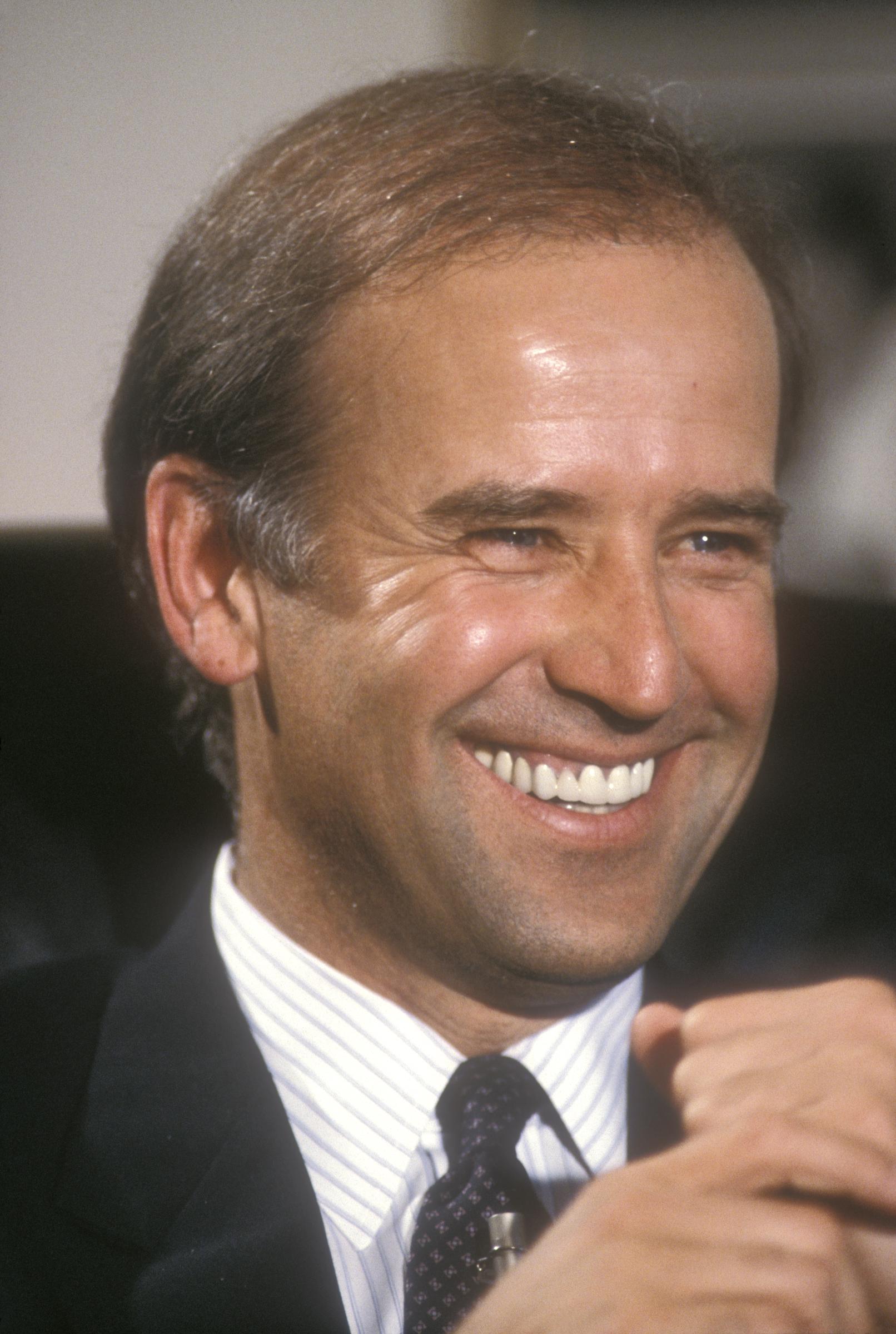
Senator Joe Biden in January 1, 1988 | Source: Getty Images
The former president has endured a string of serious health challenges — from brain bleeds to cancer that reached his bones. His battle with illness has stretched over decades, shaped his political path, and altered his personal life. It all began with a moment that nearly ended everything.
A Sudden Collapse and a Life-Threatening Diagnosis
It was 4:10 a.m. on a cold winter morning in 1988. Biden lay on the floor of a hotel room, fully clothed, jolted awake by a blinding bolt of pain in his head. He would later describe it as “a rip of pain like I never felt before.”
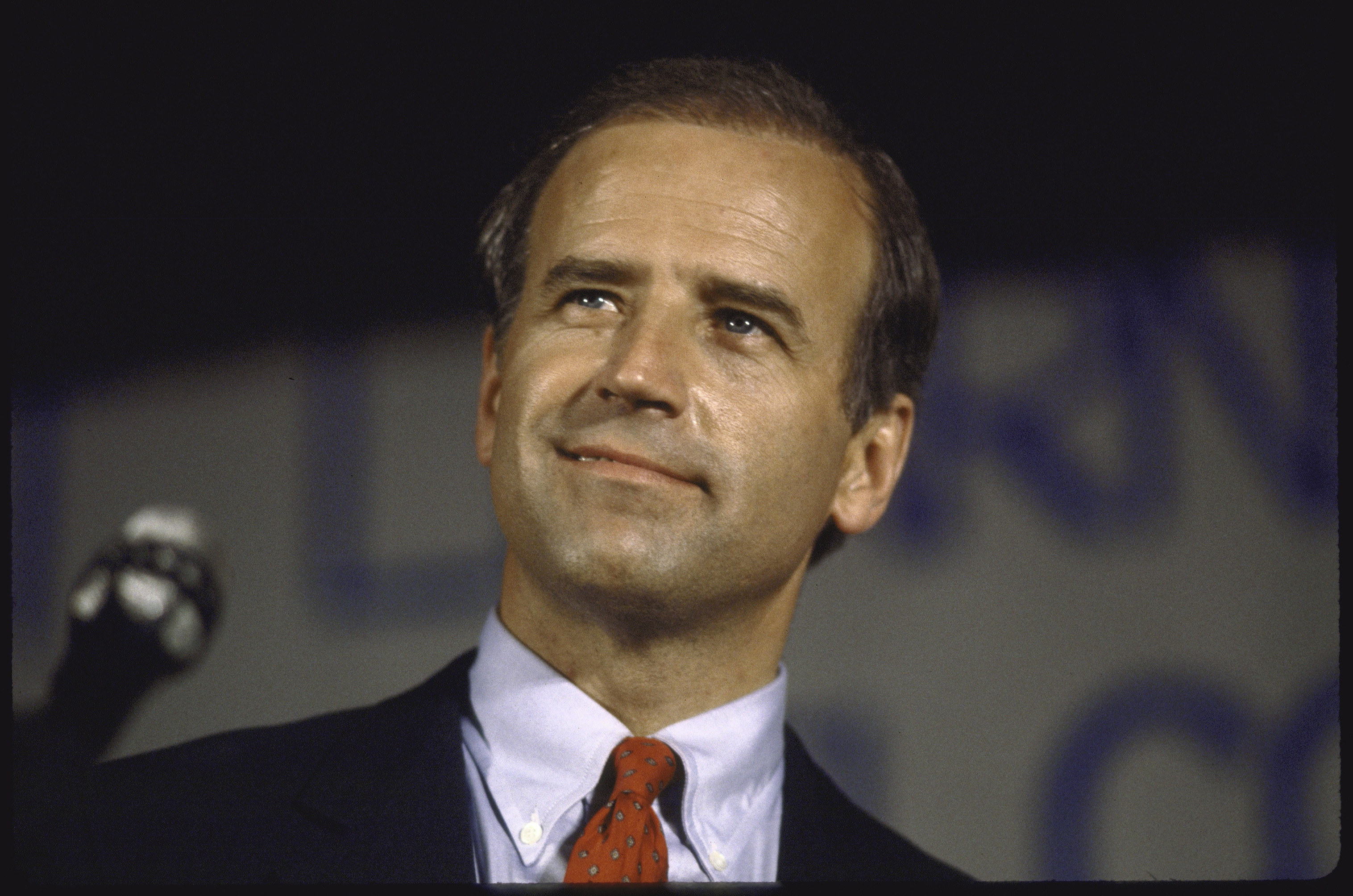
Senator. Joe Biden announcing his bid for 1988 Democratic presidential nomination in June 1, 1987 | Source: Getty Images
For nearly a year, headaches had plagued the then 45-year-old senator. They were relentless, interrupting his first presidential campaign. He consumed up to ten Tylenol a day, convinced it was a pinched nerve.
But this pain was different and unbearable so he rushed to St. Francis Hospital. Tests revealed blood in his spinal fluid — a sign of internal bleeding. Scans showed an aneurysm, a balloon-like bulge on an artery at the base of his brain. It had ruptured, spilling blood around the brainstem and his condition was critical.
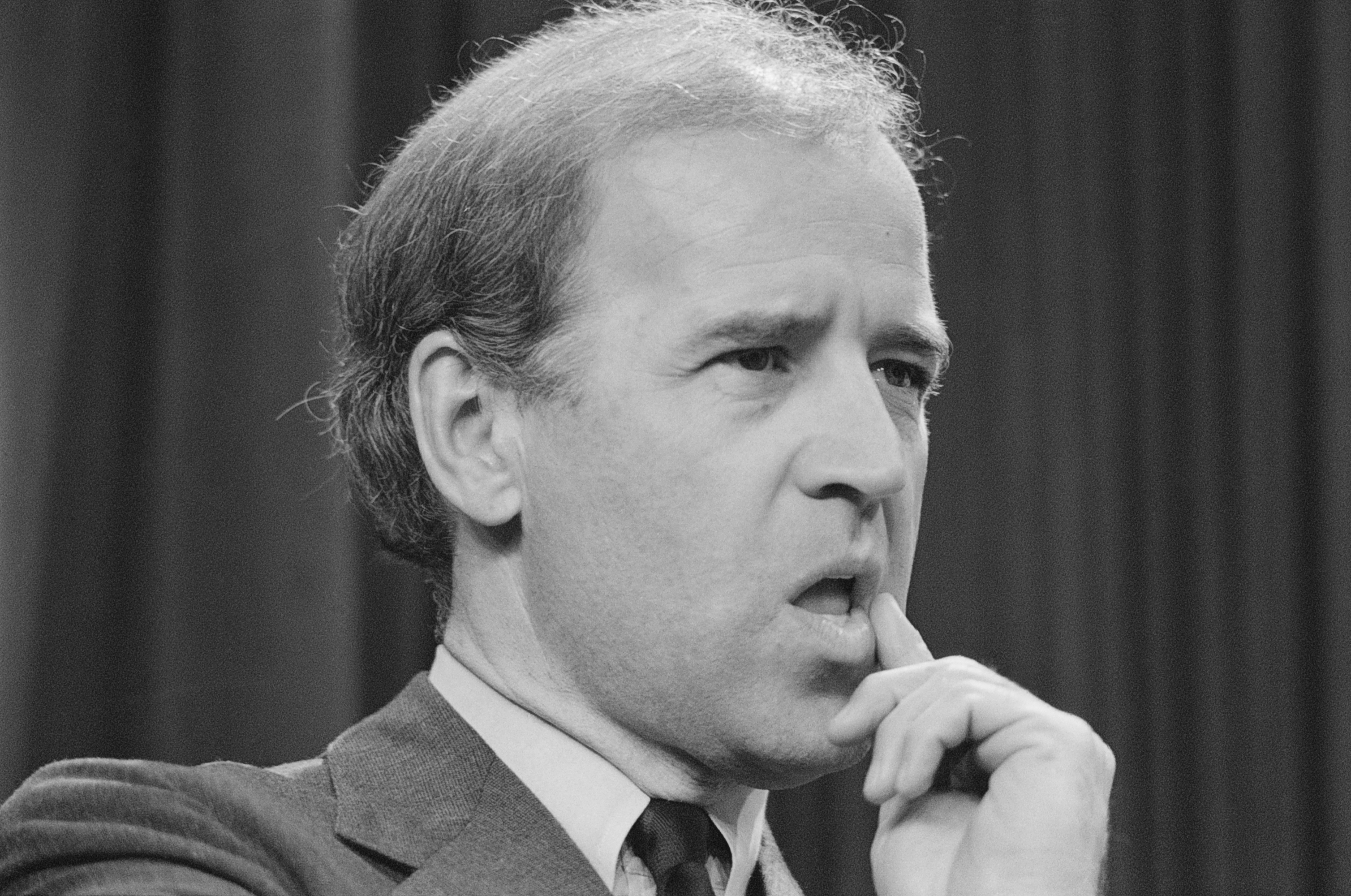
Senator Joe Biden in January 1990 | Source: Getty Images
Fearing the local hospital couldn’t handle the complexity of the case, Biden’s family insisted on a transfer to Walter Reed Army Medical Center. There, he underwent emergency surgery. Surgeons clipped the damaged vessel to stop the bleeding. But another threat loomed.
Doctors found a second aneurysm on the opposite side of his brain. It had not yet ruptured, but it would require another surgery later that year. The operations sidelined Biden for months and his recovery was slow and uncertain, ending his presidential bid at the time.

Portrait of Senator Joe Biden in his office shot in September of 1988. | Source: Getty Images
The crisis didn’t end with brain surgery. In 1989, Biden faced another life-threatening emergency. As he continued recovering from his aneurysms, Biden was diagnosed with pulmonary embolisms — blood clots that travel to the lungs and block arteries.
He was again hospitalized at Walter Reed Army Medical Center. Doctors discovered a clot had lodged in one of his lungs. While it caused no damage, the condition itself was serious. If left untreated, pulmonary embolisms can be fatal.
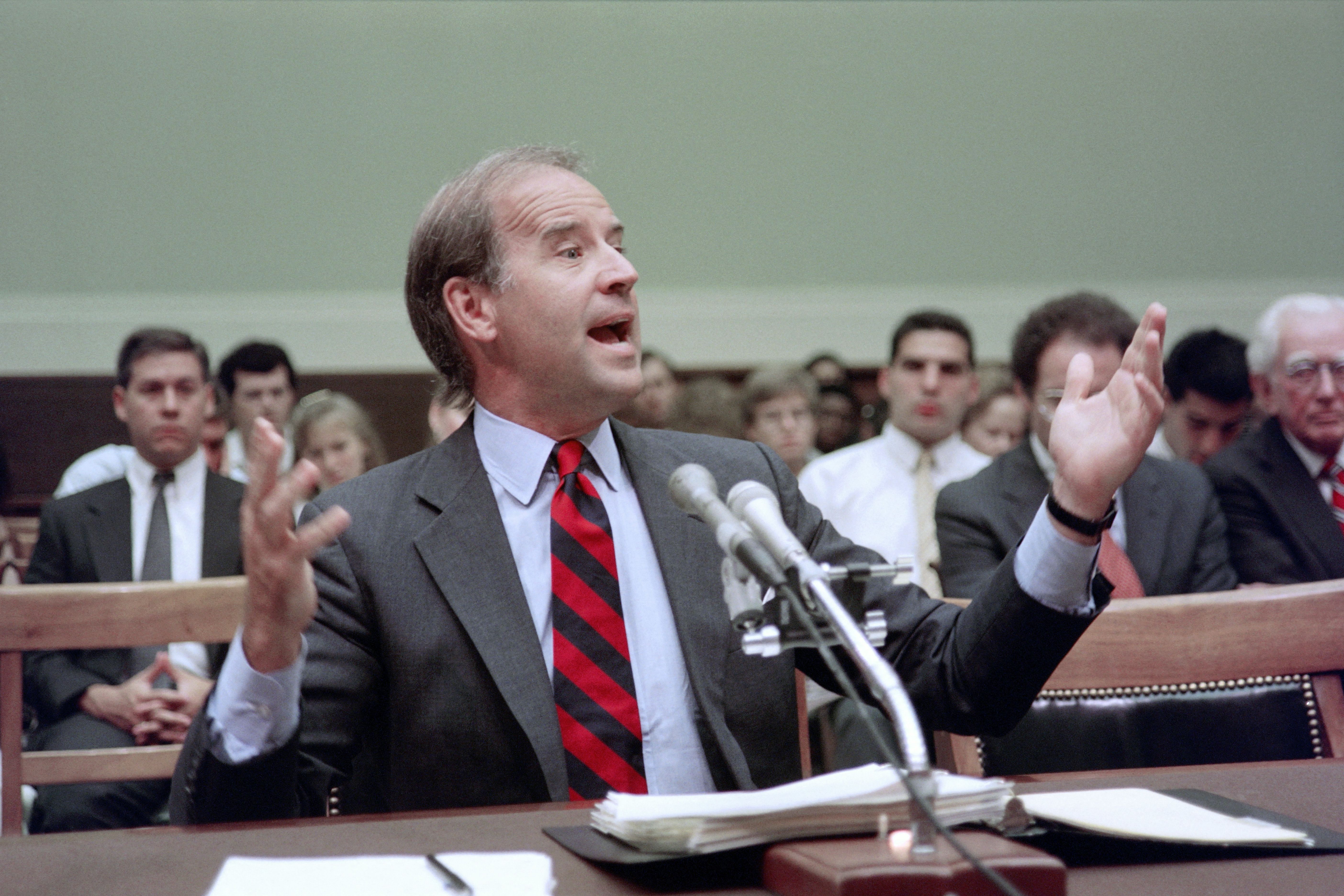
Jose Biden, speaks on July 13, 1989 before a House of Representatives panel | Source: Getty Images
The complication extended his hospital stay. Biden would later reveal that doctors gave him less than a 50 percent chance of survival. The embolism, combined with the aneurysms, made his odds even worse.
It was a grim chapter in a growing list of medical threats. In 1996, Biden underwent a colonoscopy. A polyp was found and removed. It was benign.
Around the same period, he was also diagnosed with an enlarged prostate. He manages the condition with Flomax, a common medication used to relieve urinary symptoms.

Joe Biden as he rehearses for his speech for Democratic National Convention in Chicago on August 27, 1996 | Source: Getty Images
New concerns emerged in the early 2000s. In June 2003, Biden had his gallbladder removed. Not long after, he experienced an irregular heartbeat — atrial fibrillation. The condition returned in July 2006 and later that year, he sought further treatment.
Doctors linked the heart rhythm disorder to sleep apnea, a condition where breathing repeatedly stops and starts during sleep. Atrial fibrillation can lead to fatigue, shortness of breath, and a higher risk of stroke. At the time, Biden was advised to take daily aspirin as a preventive measure.
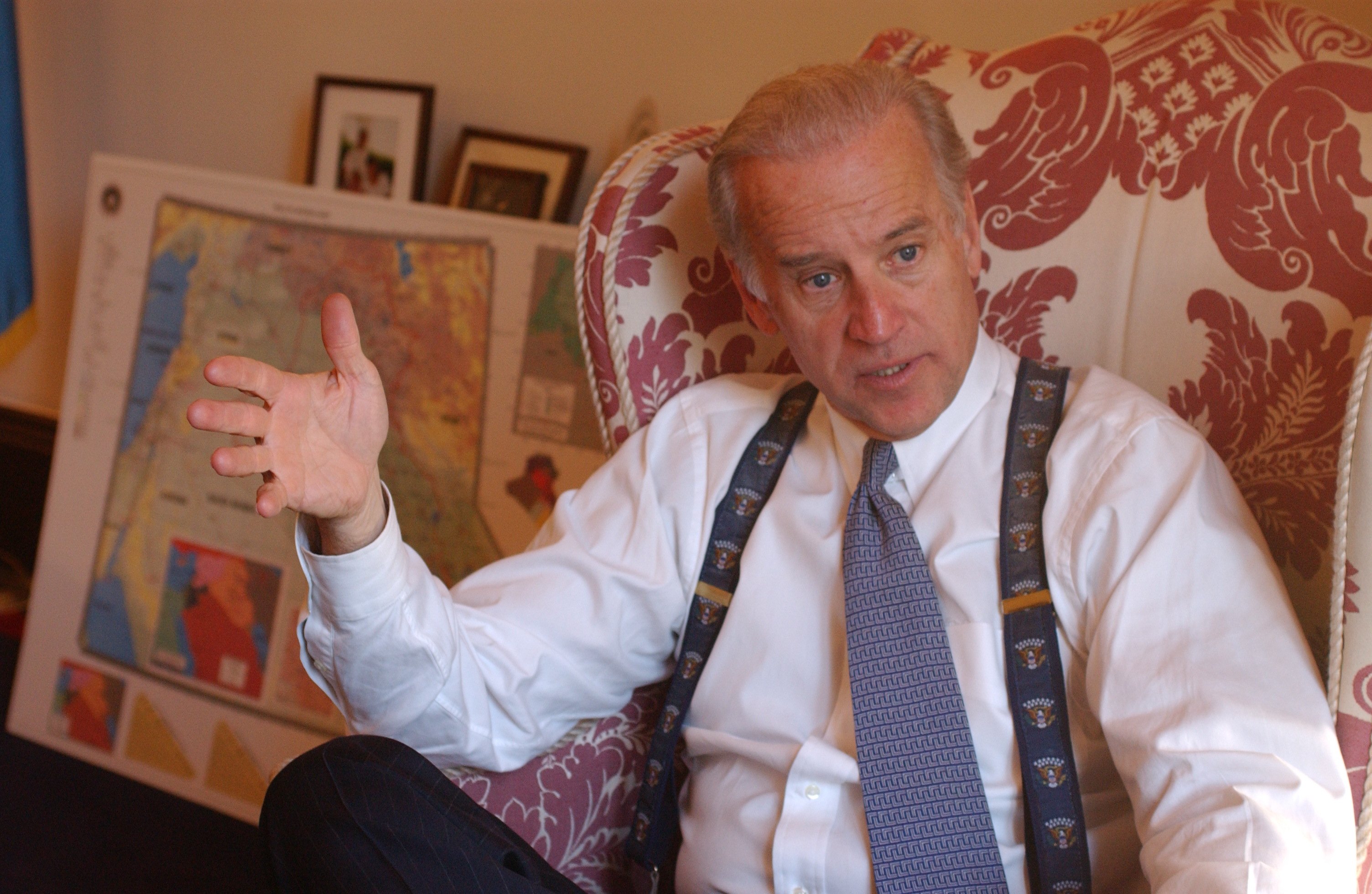
Joe Biden during an interview in his office on February 5, 2003 | Source: Getty Images
Cardiac specialist Dr. Hugh Calkins of Johns Hopkins University noted that atrial fibrillation is common in aging men and believed the condition wouldn’t affect Biden’s ability to serve in public office.
2015: A Family Tragedy that Left Him Devastated
In 2015, Biden faced a deeply personal loss that would reshape his public life. It was not his own diagnosis this time, but that of his eldest son, Beau Biden. The former Delaware attorney general was just 46 years old when he died from glioblastoma — an aggressive and deadly form of brain cancer.
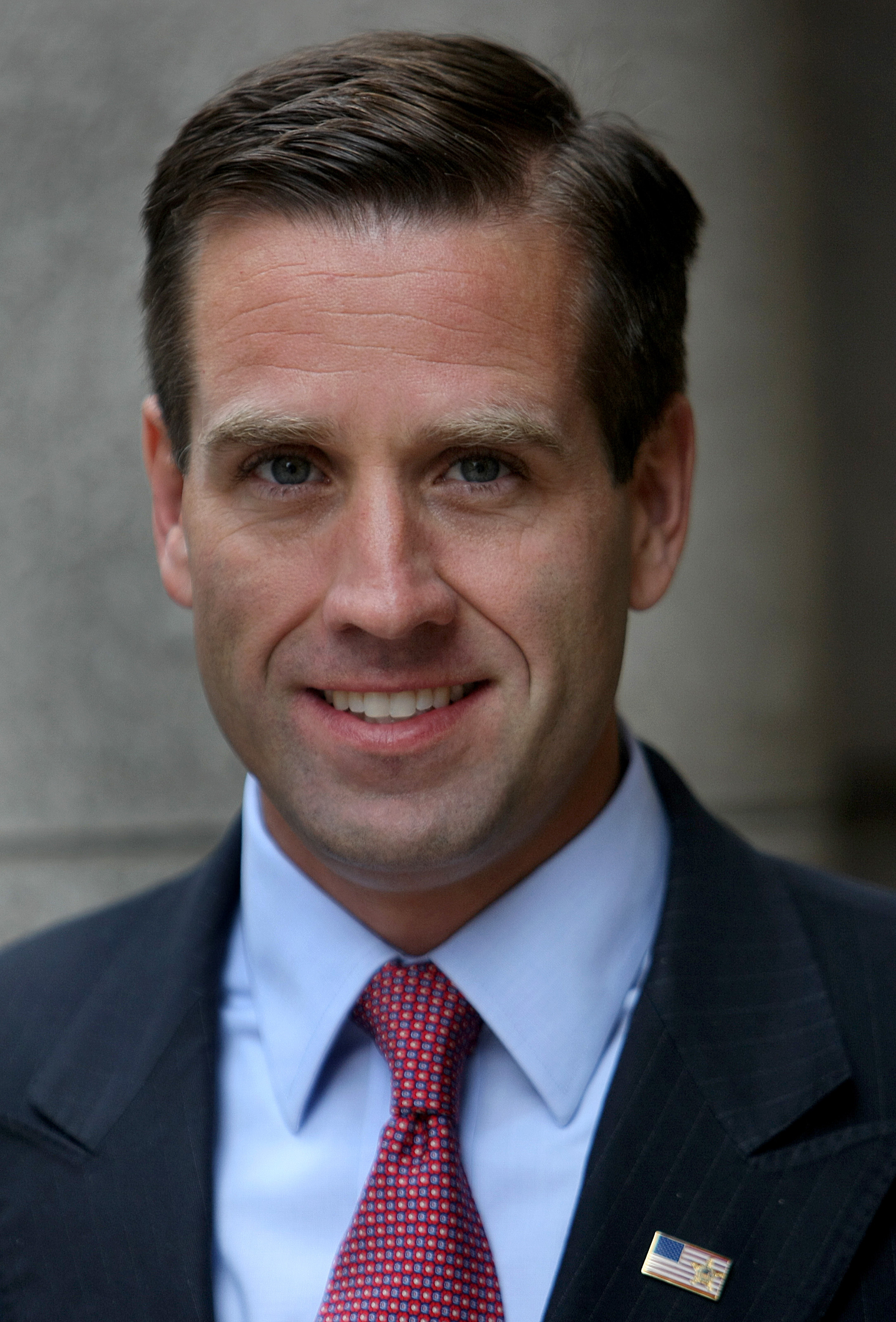
Beau Biden pictured in Boston on Sept. 22, 2008. | Source: Getty Images
The loss devastated Biden. Years later, as he launched his presidential campaign, Biden spoke openly about how Beau remained present in his life.
“He walks with me. I know that sounds to some people kind of silly, but he really, honest-to-God does,” Biden told MSNBC’s “Morning Joe” in 2020. “I know he’s in me, I know he’s part of me.”
By 2019, Biden was once again in the public eye, this time as a leading candidate in the race for president. His campaign appearances prompted scrutiny. Critics pointed to verbal missteps and questioned his energy. The release of Biden’s medical records was part of a broader push to assure voters he was physically and mentally fit for office.
By then, Biden had a well-documented history: aneurysms, embolisms, atrial fibrillation, and more. But he also had regular care and a team of physicians monitoring his health. In November 2021, another medical development was added to the long list of health updates on Biden.

Joe Biden holds a campaign event at the IBEW Local 490 on June 4, 2019 in Concord, New Hampshire. | Source: Getty Images
During a routine colonoscopy, doctors discovered and removed a polyp from his colon. The White House described it as “benign but potentially pre-cancerous.” Though the removal was successful, the findings prompted concern.
The polyp had not been addressed earlier and had grown over time — a detail that raised questions despite assurances from the medical team. Dr. Kevin O’Connor, Biden’s physician, identified the growth as a tubular adenoma.
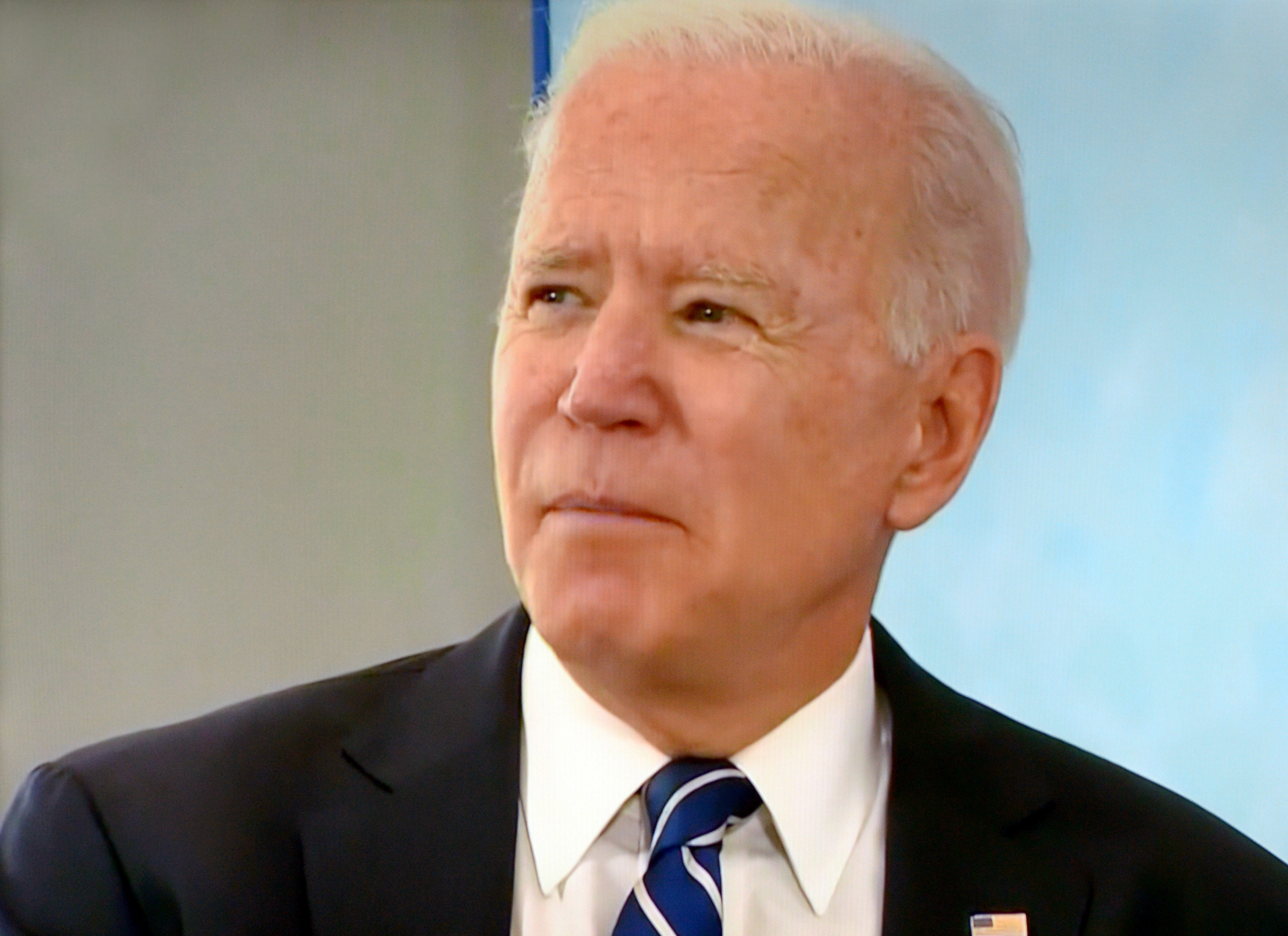
Joe Biden after arriving in the UK for the G7 summit amid the COVID-19 coronavirus pandemic. June 2021 | Source: Getty Images
These types of polyps are common and typically slow-growing. However, they carry the potential to become malignant if left untreated.
2023: Routine Checkup, New Concerns
In July 2022, Biden tested positive for COVID-19 for the first time. His symptoms were mild — a runny nose, fatigue, and a dry cough. He remained in isolation at the White House residence and continued working remotely. His medical team administered Paxlovid, an antiviral treatment authorized for high-risk individuals.
Though public updates aimed to reassure the country, Biden’s diagnosis came at a time of lingering national anxiety over the virus. He appeared on Zoom to conduct meetings, trying to project stability.
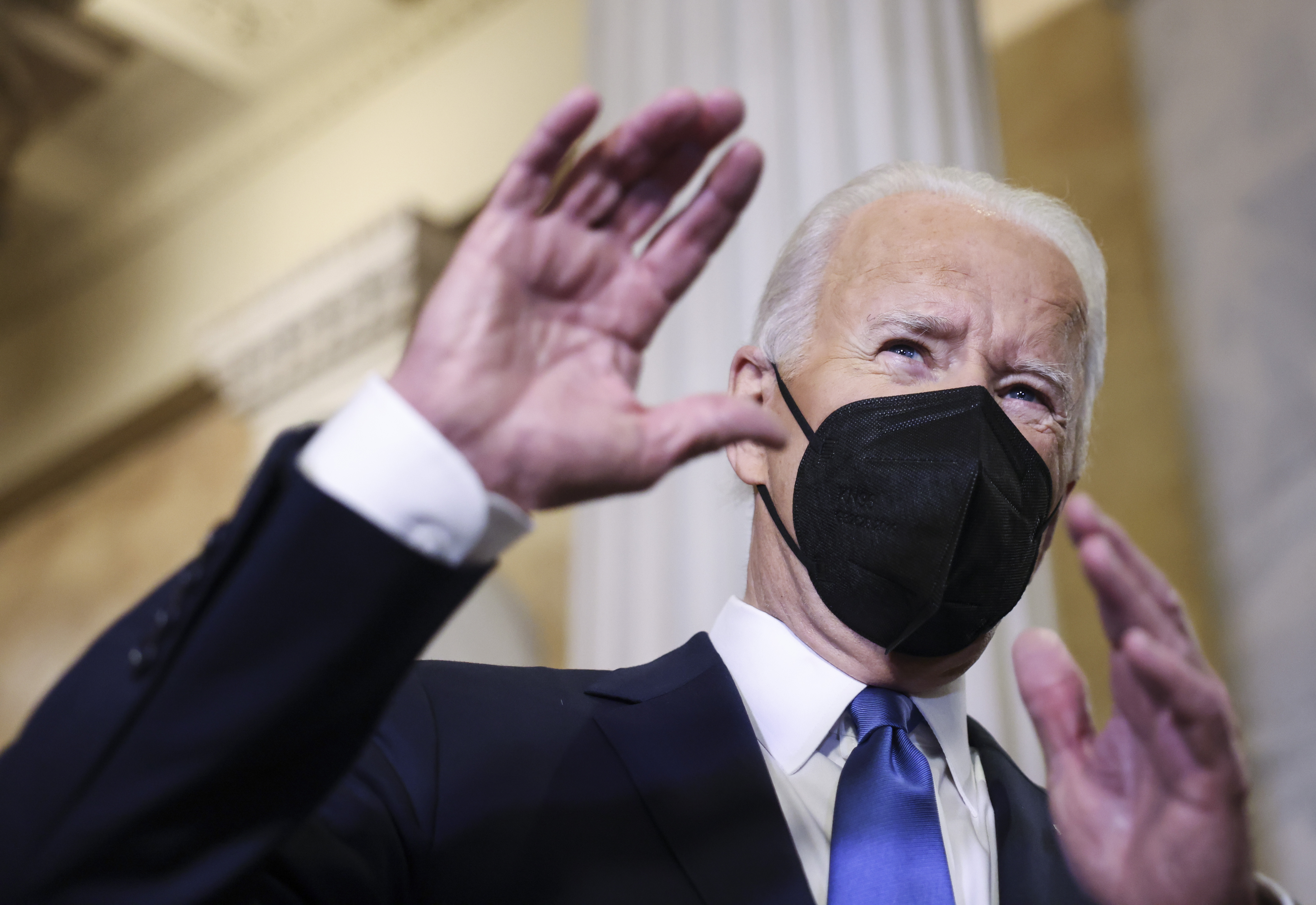
Joe Biden speaks to reporters on January 6, 2022 in Washington, DC. | Source: Getty Images
Just days after testing negative, Biden experienced a rebound case — a known risk following Paxlovid treatment. He again isolated and resumed treatment. This second round also passed without complications, and he was soon declared fully recovered.
In 2023, Biden underwent a routine physical and his physician described him as “healthy,” “vigorous,” and “fit to successfully execute the duties of the presidency.”
Still, the exam revealed a small lesion on his chest. It was removed and sent for biopsy. The results were pending at the time of the physician’s report. Other evaluations, including exams of his ears, eyes, throat, and neurological system, were normal. A detailed neurologic review showed no signs of stroke, Parkinson’s disease, or multiple sclerosis.
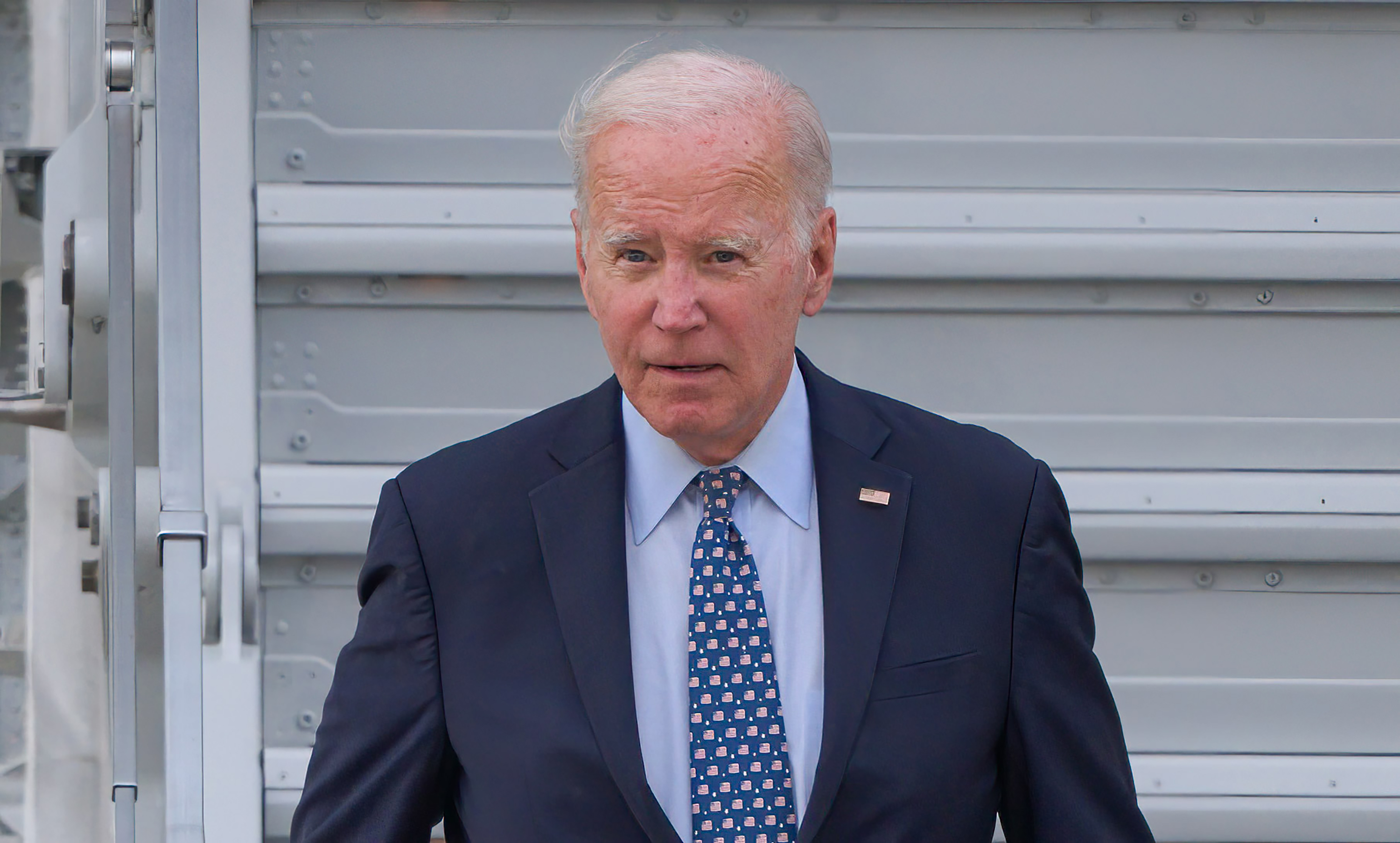
Joe Biden disembarking from Air Force One at John F. Kennedy airport in New York City on September 17, 2023. | Source: Getty Images
Skin Cancer Diagnosis and Another COVID-19 Disruption
That year, Biden had a skin lesion removed from his chest. A biopsy confirmed it was basal cell carcinoma, a common form of skin cancer. The lesion was treated successfully, and no additional procedures were needed.
Dr. O’Connor stated in a public memo that the area had “healed nicely” and that no further treatment was required. It marked the first time Biden had been publicly diagnosed with any form of cancer while in office.

Former U.S. President Joe Biden arriving on Air Force One at Stansted Airport in Essex, England on July 9, 2023. | Source: Getty Images
In 2024, Biden again tested positive for COVID-19. The diagnosis came at a critical moment — disrupting a key campaign event aimed at boosting support among Latino voters.
As before, Biden experienced only mild symptoms. He received a dose of Paxlovid and was fully vaccinated and boosted. “I feel good,” he told reporters in Las Vegas.

Joe Biden speaks during a campaign event at Pearson Community Center in North Las Vegas, Nev. on Sunday, Feb. 4, 2024. | Source: Getty Images
The campaign schedule was briefly adjusted, but Biden resumed public duties shortly after recovering. By June 2024, concerns about Biden’s health reached a breaking point.
During a televised presidential debate, the then-incumbent appeared visibly disoriented. He paused mid-sentence, lost his train of thought, and struggled to respond to direct questions. The performance stunned even his strongest supporters. While aides initially blamed a cold, internal reports suggested something far more serious.
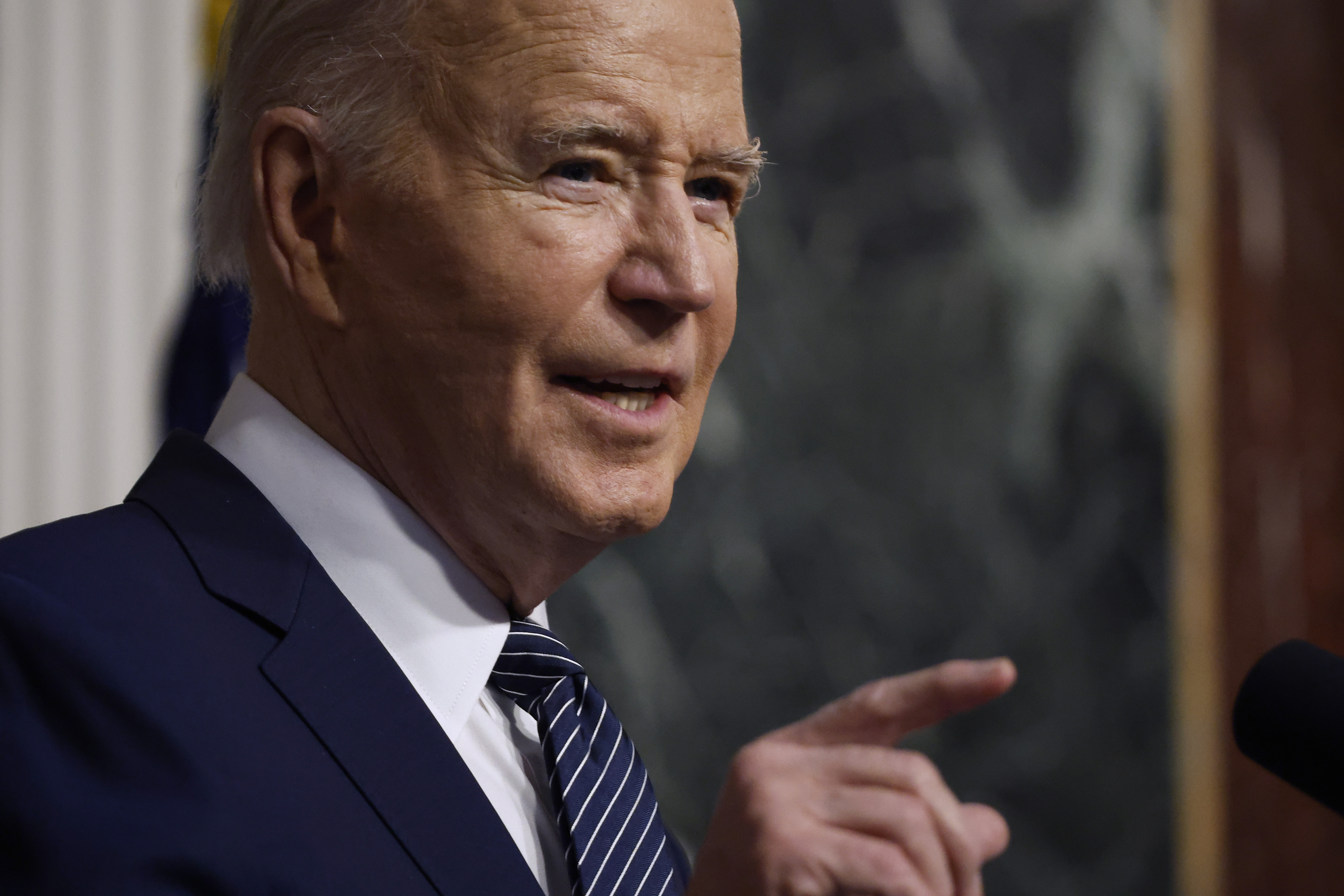
President Joe Biden delivers remarks during an event with healthcare advocates and stakeholder on April 03, 2024 in Washington, DC. | Source: Getty Images
The debate marked a turning point. Days later, Biden announced his withdrawal from the 2024 race. The move cleared the path for former Vice President Kamala Harris to secure the Democratic nomination.
On July 4, Biden made a brief appearance at an Independence Day celebration. He spoke briefly and watched the fireworks. But each public appearance since the debate drew closer scrutiny. His verbal stumbles and moments of confusion became focal points in national discourse.

Joe Biden departs the White House on July 15, 2024 in Washington, DC. | Source: Getty Images
The most serious and sobering development came in May 2025. Biden’s office confirmed that the former president had been diagnosed with metastatic prostate cancer — an advanced stage of the disease in which cancer has spread beyond the prostate to other parts of the body. In Biden’s case, it had reached his bones.
Doctors began investigating after Biden experienced urinary symptoms and a nodule was found on his prostate. A biopsy followed.
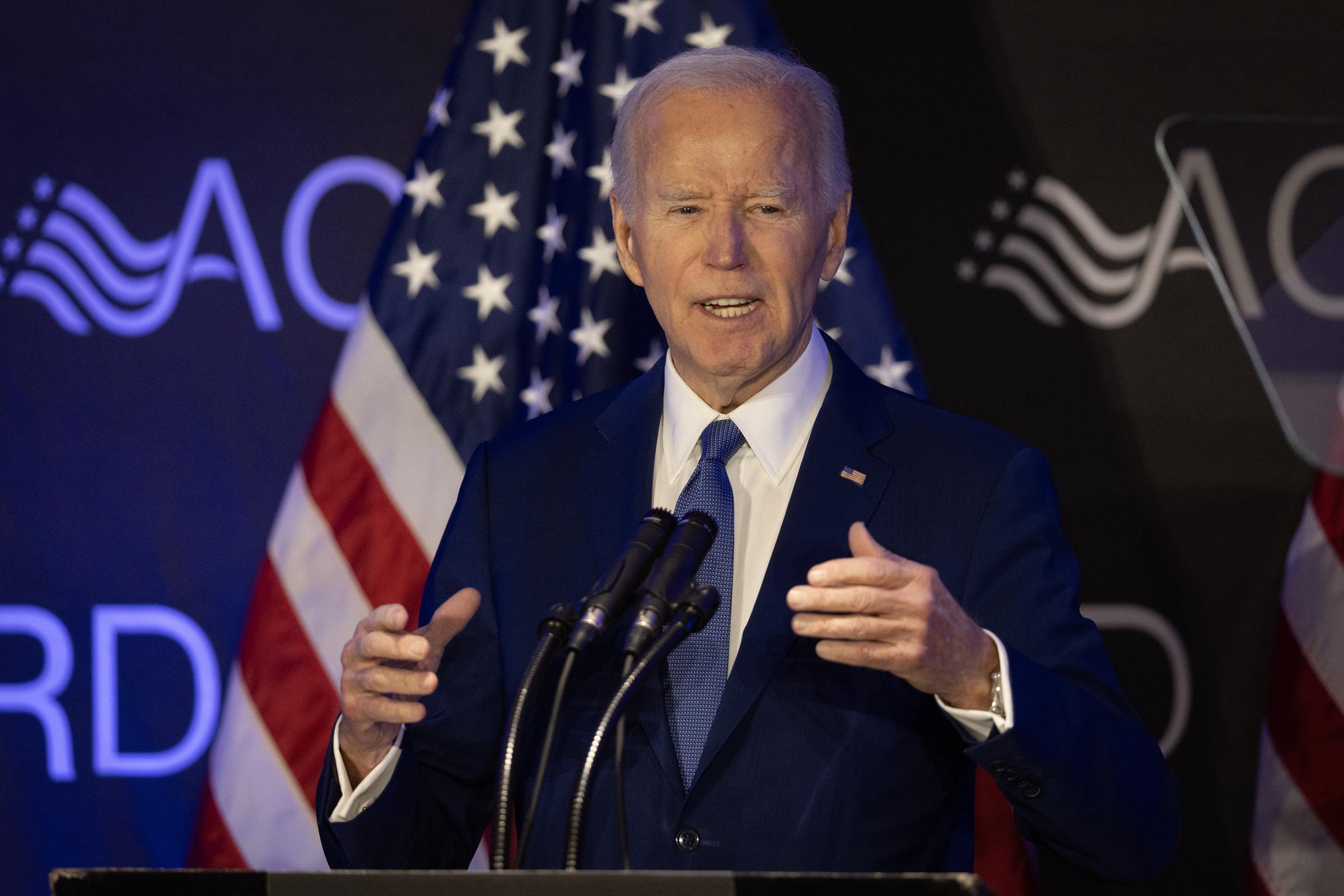
Former U.S. President Joe Biden speaks at a conference hosted by the Advocates, Counselors, and Representatives for the Disabled (ACRD) on April 15, 2025, in Chicago, Illinois | Source: Getty Images
The cancer was classified with a Gleason score of 9, a high-grade rating that indicates the presence of abnormal cells likely to grow and spread quickly. According to the National Institutes of Health, Gleason scores range from 6 to 10. A score of 9 signals aggressive cancer.
Once prostate cancer spreads to the bones, treatment becomes more complex. While therapies can slow its progression, the disease is generally considered incurable at this stage.
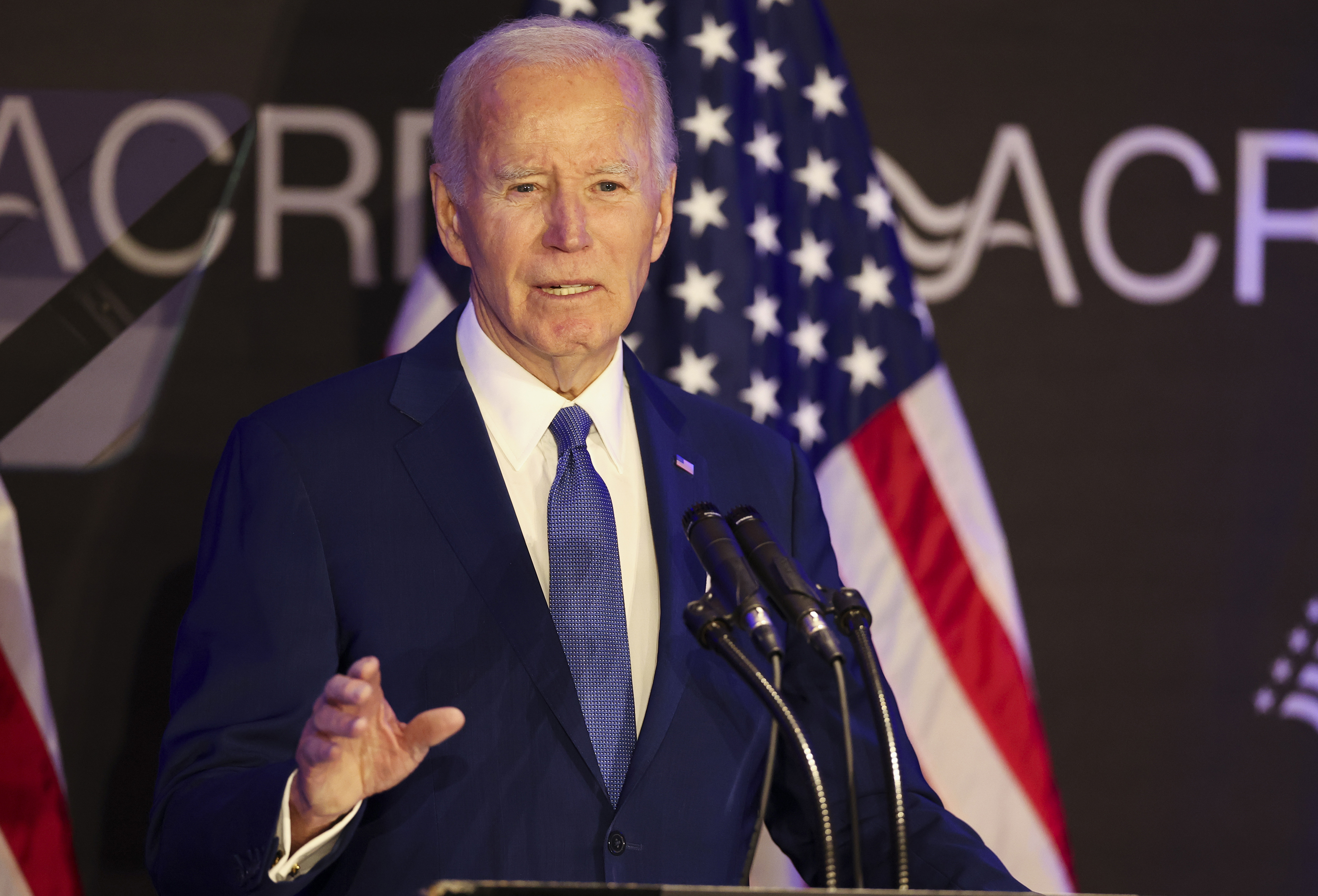
Former President Joe Biden speaks during the Advocates, Counselors, and Representatives for the Disabled bipartisan conference on Tuesday, April 15, 2025 | Source: Getty Images
Biden’s office acknowledged the gravity of the diagnosis, though further details about his treatment plan were not disclosed.
In January 2025, a new round of questions about Biden’s health surfaced — this time sparked by a visible bruise on his left hand.
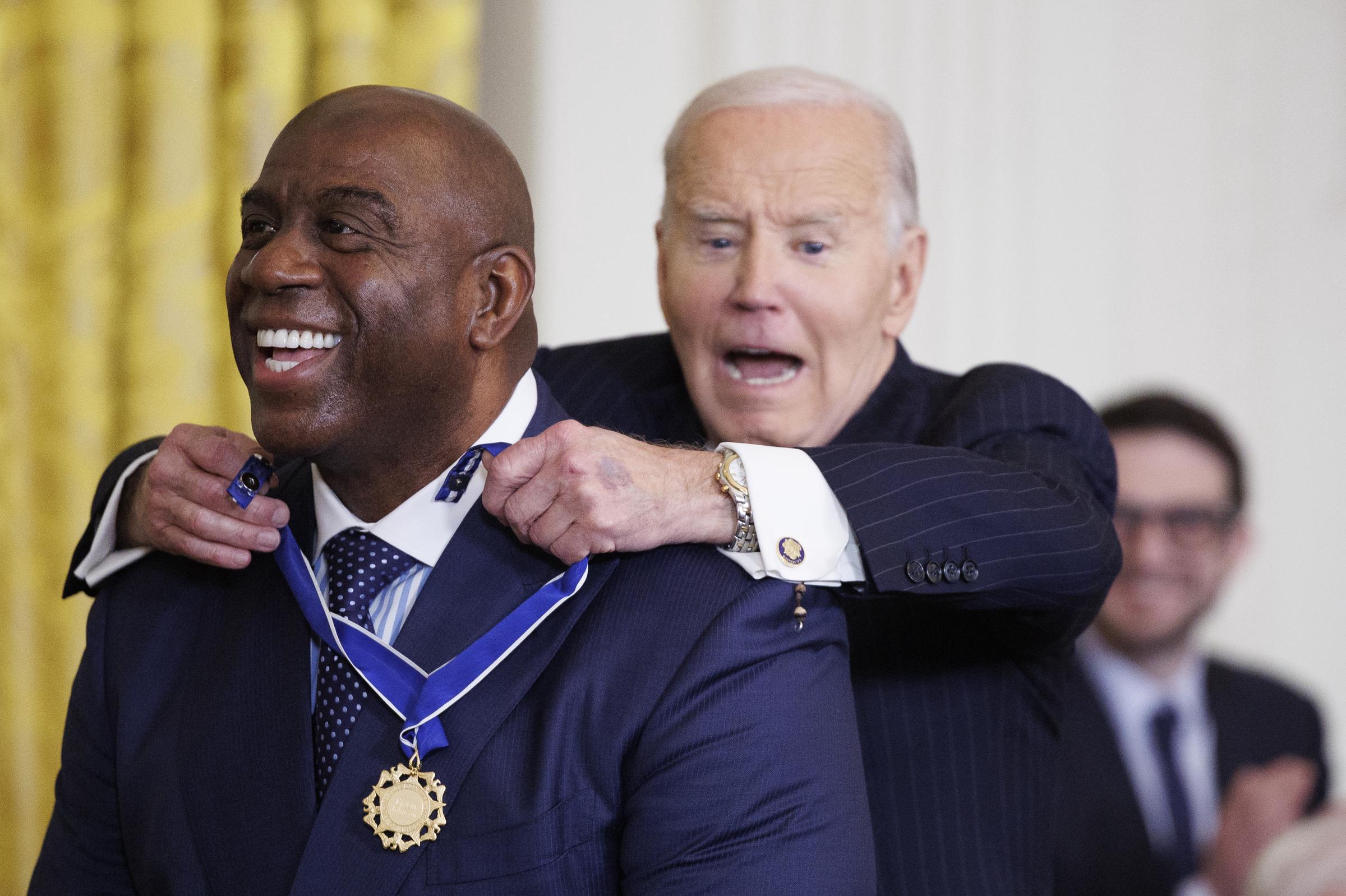
Joe Biden reacts while awarding Former NBA player Earvin “Magic” Johnson the Presidential Medal of Freedom in the East Room of the White House on January 4, 2025 in Washington, DC. | Source: Getty Images
The mark was first noticed during a public event in the White House’s State Dining Room, where the then-82-year-old president celebrated the historic number of federal judges confirmed during his administration. As photos and videos of the event circulated online, social media users quickly pointed out the discoloration.

Science advocate and television host Bill Nye is awarded the Presidential Medal of Freedom by former President Joe Biden in the East Room of the White House on January 4, 2025 in Washington, DC. | Source: Getty Images
“PAY CLOSE ATTENTION TO JOE BIDEN’S HAND,” one social media user posted, alongside a zoomed-in video. Another wrote, “Looks like he may be getting injected with something.”
Theories and reactions spread rapidly. “Oh my God!!! JOE BIDEN HAS A BRUISE ON HIS HAND!!!! I can’t believe it, what could this possibly mean??? My head is completely spinning right now,” another post exclaimed.
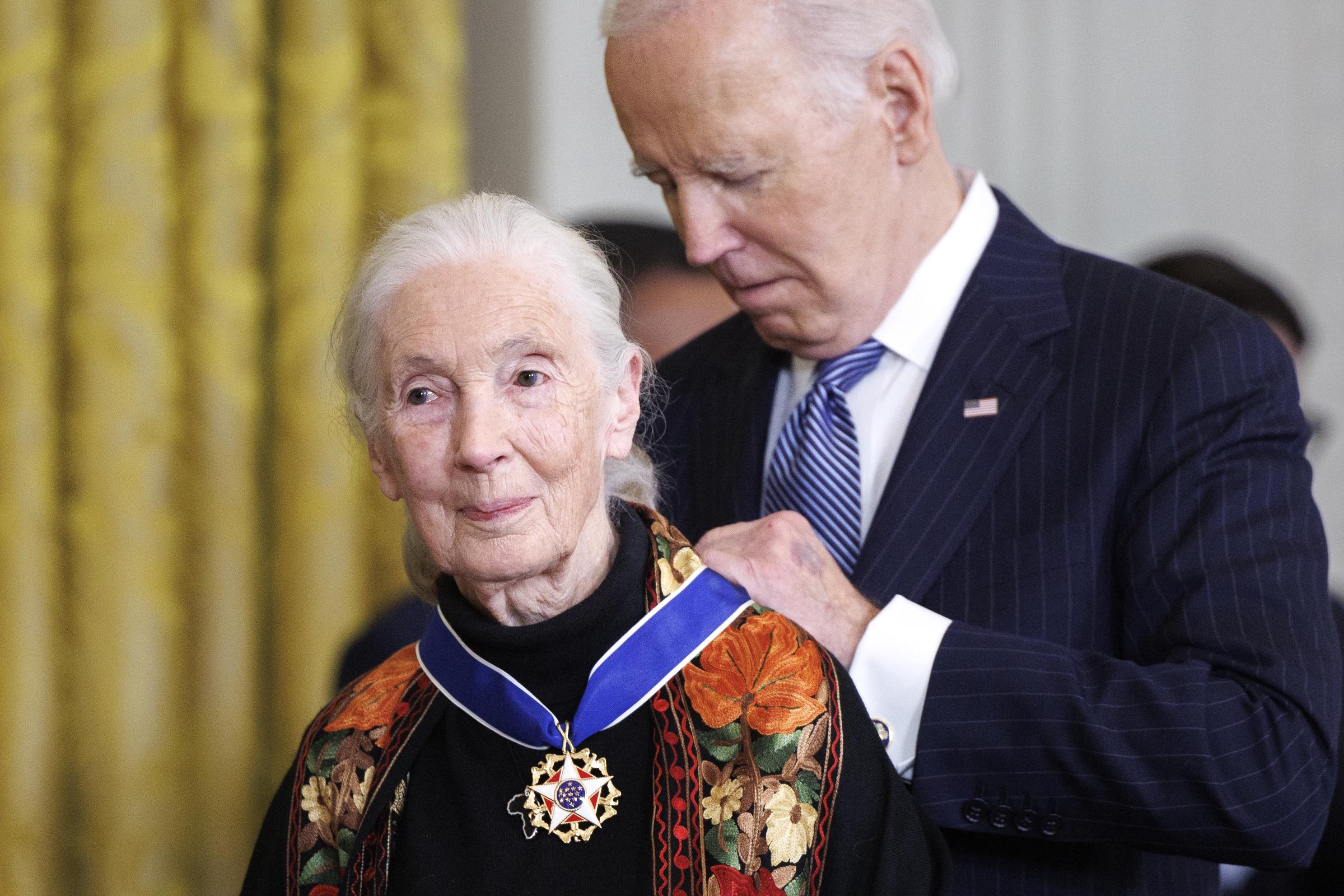
Ethologist and conservationist Dr. Jane Goodall is awarded the Presidential Medal of Freedom by former President Joe Biden in the East Room of the White House on January 4, 2025 in Washington, DC. | Source: Getty Images
One user shared a previous clip dated December 11, 2024, claiming, “The bruise on his hand seems to be there quite often. Look.” Speculation varied — from concerns about intravenous treatments to assumptions about routine aging. Some tried to bring reason to the discussion.
Despite the growing chatter, the White House issued no formal statement regarding the bruise. The lack of explanation only fueled the online conversation.